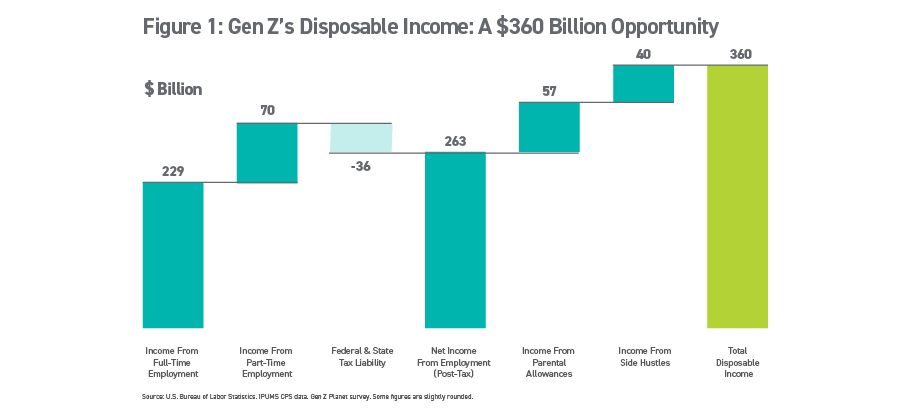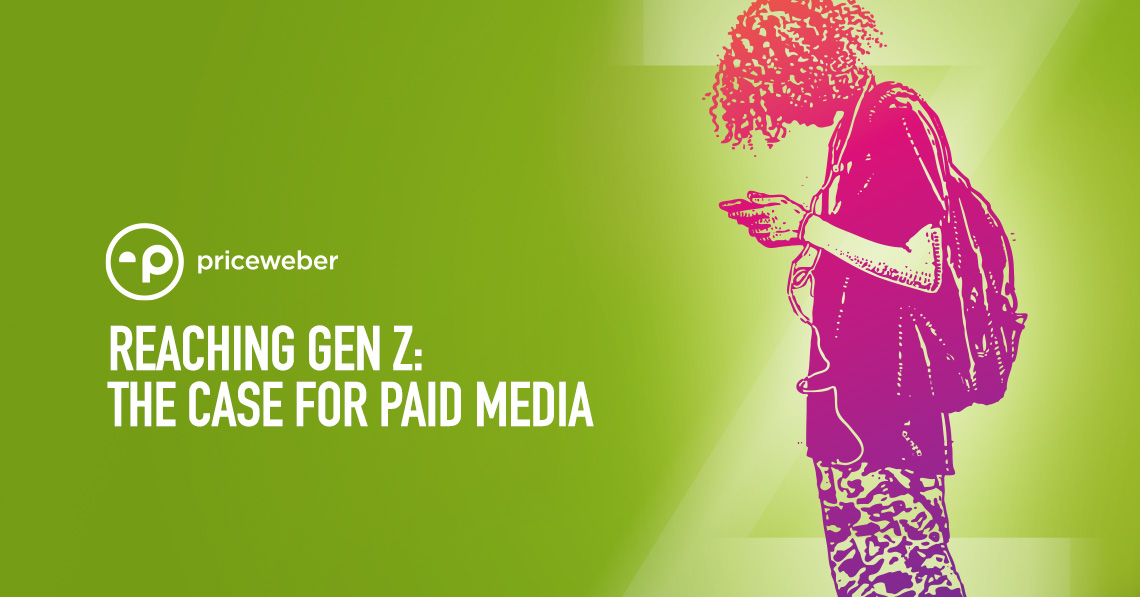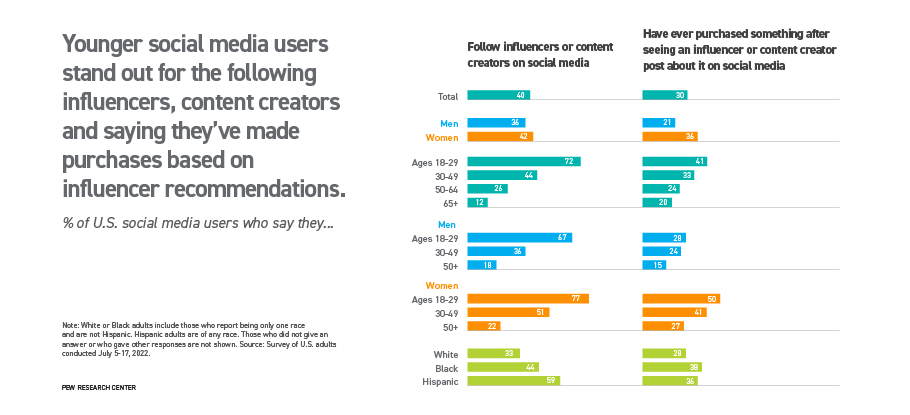1.3 seconds – that’s how much time businesses have to capture the attention of potential Gen Z consumers, according to a recent study by OMG, Yahoo, and Amplified Intelligence. As the first true digital natives, Generation Z (born 1997 – 2012) is the first generation that grew up with the internet, where news, information, entertainment, and community are available instantly. This demographic is savvy. They are excellent multitaskers, and they can consume a lot of information quickly. Gen Zers will decide, almost immediately, whether or not they are interested in something, including which brands they love and which businesses they hate. In a world where skippable ads and subscription services are the norms, where ads are optional, only requiring a quick swipe or click of the skip button to get rid of them, how can you use your marketing dollars to reach and influence this massive consumer segment? In this edition of Plain Talk, we’ll look at how Gen Z consumes media and give you tips on how to use your media budget to reach, influence, and convert this audience.
The Numbers Brands Need to Know: Why Gen Z Matters and How To Reach Them
Besides the whole “they are the future” thing, the majority of Gen Zers are now adults, with a collective spending power of over $360 billion in disposable income, and they make up a huge chunk of the consumers buying online. When looking at “active digital buyers,” Gen Z has already surpassed Boomers and is breathing down the necks of Gen X and Millenials. While this group is thrifty, they are willing to spend if you can capture their attention and convince them you’re worth it. But in order to reach this audience, you have to understand their media and content consumption habits.
- 90% of Gen Z adults spend more than an hour online (typically on social media) each day, and half are clocking in at 3+ hours consuming social media, making them the heaviest social media users of all generations.
- Compared to older generations, Gen Z adults tend to be more loyal: 64% are willing to spend more to shop with companies they are loyal to, but over two-thirds (70%) will also buy from competitors if it benefits them.
- Gen Zers are more likely to pay attention to social media and outdoor advertising than other generations. They are much less likely to pay attention to TV ads (if they even have traditional TV).
- In line with millennials, more than half of Gen Z adults are willing to buy directly from social media (compared to Gen X at 38% and Boomers at 22%).
- According to Morning Consult, Gen Z prefers social media for news and information, but they have a healthy skepticism of information on the internet and don’t fully trust brands or platforms to protect their privacy. The average user wants authentic and useful content, and they will do their research to make sure that’s what they are getting.
- They have some familiarity with the metaverse, but it’s on par with millennials at 50%. It doesn’t mean they love it, though – they like the gaming aspects but do not see it as a tool to replace real-life social interactions.
- YouTube is this generation’s living room TV set, but they also spend a lot of time with TikTok, Instagram, and other social media platforms. Gen Z spends more time with digital video than older age groups.

GEN_Z_Disposable_Income
Smart Strategy: Tips To Make the Most of Your Media Spend
As a media planner and buyer (and a millennial at that), the idea that Gen Zers view ads as elective (and are skeptical of the ads they do see) was an uncomfortable realization – how can we reach these Gen Z users, much less influence their purchasing decisions? The goal of media is to deliver timely, relevant messages to the right people – how do we accomplish that in the case of a target audience who decides in one second whether they care (much less trust) the brand and the message? Hint: The answer is not to reduce your media spend – we just need to rethink how we use those dollars differently. It’s all in the approach, and we’ve included our top three tips to maximize your external marketing efforts and optimize your media approach.
Tip #1: Paid Media Should Play a Supporting Role
Gen Z understands how advertising works, which is why they can be skeptical – they know how information can be manipulated to serve a specific narrative. Only 33% of Gen Zers say they bought something based on an ad on social media. The majority of these digital buyers are purchasing products found through more organic discovery or word-of-mouth recommendations from family, friends (including the social variety,) and coworkers. While this points to investing in other aspects of marketing, many of the platforms this generation favors (for research, entertainment, or shopping) have become very pay-to-play, meaning if you want to improve the likelihood that consumers will find your organic content, you need to feed the algorithms (or the wallets of billionaire tech giants) with relevant traffic and content consumption signals. There are three key areas where paid media should support organic efforts:
1. SERP (Search Engine Results Page) – one way to establish credibility and legitimacy quickly is by leveraging both SEO (Search Engine Optimization) and SEM (Search Engine Marketing or Paid Search). Gen Z really doesn’t care where they find the information – whether it’s in the sponsored results section or in the organic listings below – they only care that the information found is useful, trustworthy, and easy to find. Paid search can help boost all digital performance by quickly driving a relevant audience to your business. Areas of focus should include Google Business Profile (GBP), useful and helpful content development, and reputation (or review) management.
2. Social Media – just being on a social platform isn’t enough – a randomly placed newsfeed ad will not generate the results you are looking for. We know that the majority of what we post organically on our social feeds will not be seen by the intended user. Whether investing in a boosting strategy or using dollars to promote user-generated content (UGC), media spend is critical to reach and engage your specific audience.
3. Earned Media / PR Coverage – Gen Z may be skeptical of ads, but they are looking for validation – information to help support their opinions and decisions. They also rely on word-of-mouth recommendations from friends and family, many of whom are using media differently (e.g., Gen X dads). PR coverage helps build credibility across all generations and is the most cost-efficient way to build awareness and trust quickly. Media spend can be used to support and expand the dissemination of that information across the platforms Gen Z uses the most.
Tip #2: Not All Social Media Platforms and Placements Are Created Equal
Gen Z spends a ton of time on social media – the most of any generation, according to Insider Intelligence. Forget Facebook – that’s a millennial and Gen X thing – Gen Z uses different platforms, and each serves a different purpose. Instagram is to Gen Z what Facebook is to Millennials – a must-have to catch up on information from your passive friend group and keep up with news and pop culture. TikTok is the platform of choice for entertainment today (and where they spend the most time), while Snap is used for messaging. YouTube is the front-runner for short-form digital video (no it’s not TikTok). Gen Z is also open to trying new and emerging apps, like BeReal, which may not hit the same number of users as some of the larger players but offers value in building like-minded online communities. Key areas to focus social media spend:
-
Influencers and UGC (User Generated Content) Creators
According to a Pew Research Center survey, 40% of adults have purchased a product or service after seeing an influencer or content creator’s post, and that number increases for young adults and women and may be more critical for specific industries over others (like beauty/fashion). While influencers certainly won’t sway everyone, combined with other communication tactics, they can certainly help build credibility and trust when used correctly. This generation values authenticity, so when selecting content creators and influencers, look to nano and micro-influencers who are genuine, align with your brand’s values, and have a loyal following.
-
Search Within Social
Breaking News: According to Google itself, nearly 40% of young people don’t start their search on Google – for many product categories, that search begins on social media platforms like TikTok and Instagram, and even YouTube. TikTok began beta testing in-platform search ads last year, but many marketers are still waiting to take advantage of the new offering. Gen Zers are active searchers, looking for information to validate their opinions or verify information. Blending search with social, a platform they use to research recommendations, makes sense and will be an important component of your search strategy in the future. For now, posting regularly, boosting to a targeted audience, optimizing content, and using appropriate hashtags will help ensure your content is available and visible to those important segments.
-
Social Commerce
Over 50% of Gen Zers purchase products or services directly on social media. Most of this generation had a smartphone at the age of 12, so they are comfortable with digital technology and expect things to be digital-forward and seamless. They expect brands to leverage the technology available to improve the ease and convenience of purchasing a product or service or communicating with a brand. If your brand or business isn’t leveraging social media for your e-commerce efforts, you may be losing potential customers to competitors who are able to offer more value or a better experience. Because Gen Z does have high standards when it comes to digital, brands must provide a positive, frictionless, and consistent customer experience at each touchpoint, whether on social or the web, on your smartphone or laptop. When promoting your brand or company, make sure you can handle orders, questions, complaints, etc., directly within that channel.
Tip #3: Video and Dynamic Ads Generate More Attention and Interest
We can see the importance of video to Gen Z from their consumption habits – the platforms they favor are video-heavy and content-rich. Based on their media consumption habits, we know they aren’t watching as much long-form content (video over 10 minutes) as previous generations, and they lean towards platforms with shorter ad formats than a traditional :15 or :30 video. In order to capture their fleeting attention, brands need to create visually captivating ads that are fresh, relevant, and genuine to the brand’s core values. Gen Z doesn’t care about your fancy high-end broadcast-quality commercial – they are much more interested in your message. Case in point, this :07 TikTok video from December received nearly 4 million views and illustrated exactly what the poster had hoped to show – content that is on-par for your brand and is relevant (aligning with trends) will generate a lot more interest at a much lower investment compared to a spot in the Super Bowl. Skip the carefully curated :30 and use your dollars to test a variety of content to figure out what works best for your brand for this specific consumer segment.
A Final Reminder
Gen Z is the largest and fastest-growing consumer segment in U.S. history, and brands and businesses must start adjusting their approach to reach and engage these consumers. They are poised to usurp older generations in the next few years in terms of both number of active buyers and overall buying power. They use media differently than their predecessors, and while they may be skeptical of advertising, it’s still a critical component of a good marketing and communications strategy. Brands will need to evolve the way they use advertising (and media spend) to reach and influence this cohort, leveraging their available spend to create maximum impact. But, with this generation’s focus on authenticity and trust, keep in mind – no amount of advertising will overcome a bad user experience. Your business is replaceable – building a solid reputation, providing excellent customer services, and a seamless experience no matter the touchpoint is table stakes.
Need help with your Gen Z media strategy or just want to nerd out with us over Gen Z consumer segments? Drop us a note or call us at 502-499-4209. Did you like what you read today? If you’re not already a subscriber to our Plain Talk newsletter, you can subscribe below. Love what you read today? Click your favorite social link below and share with your friends!



